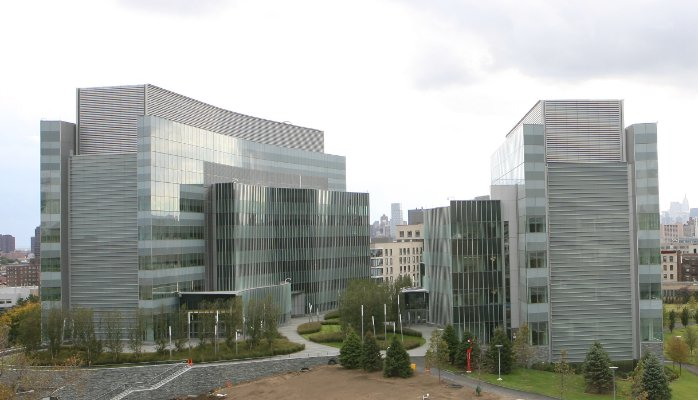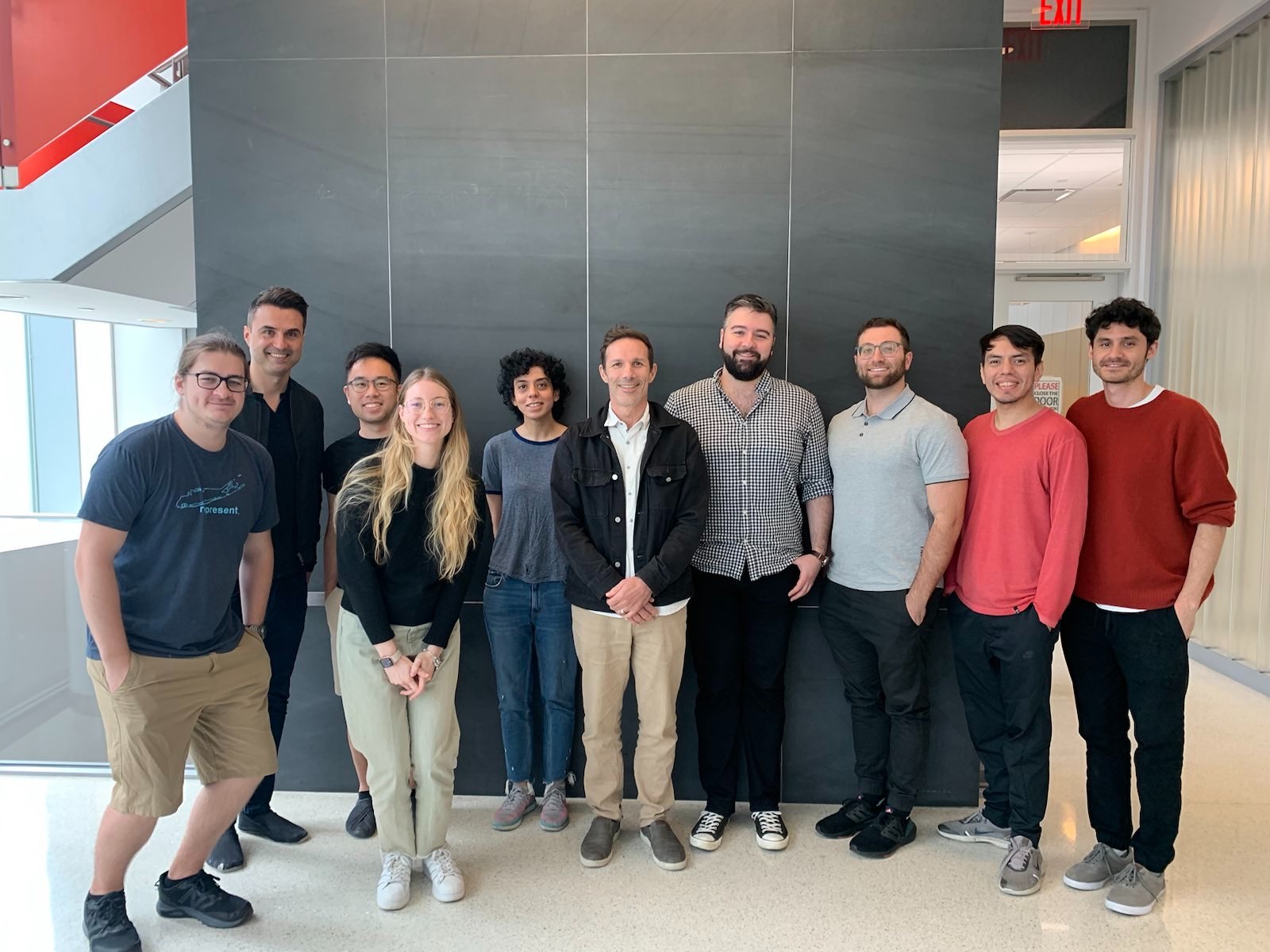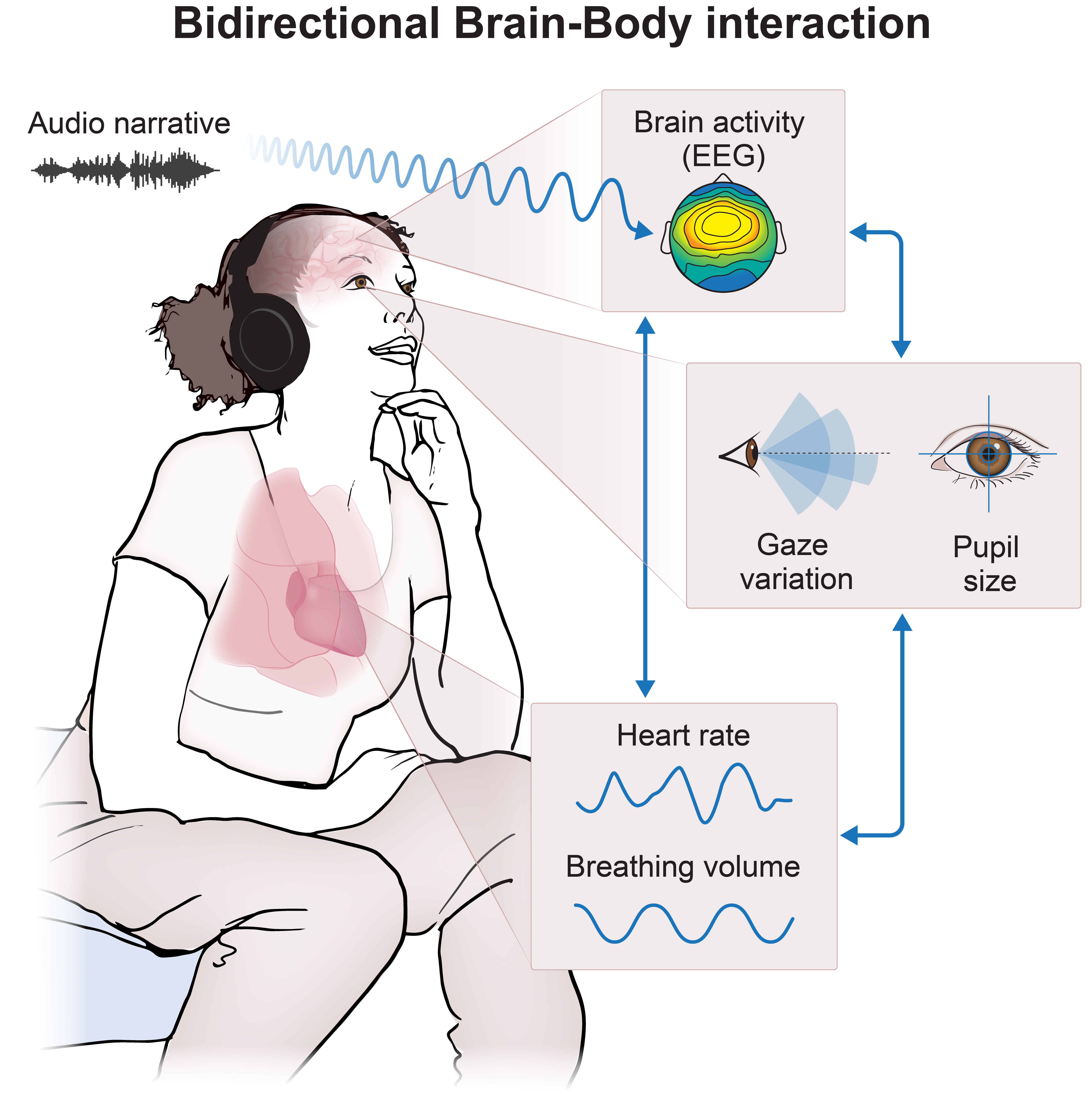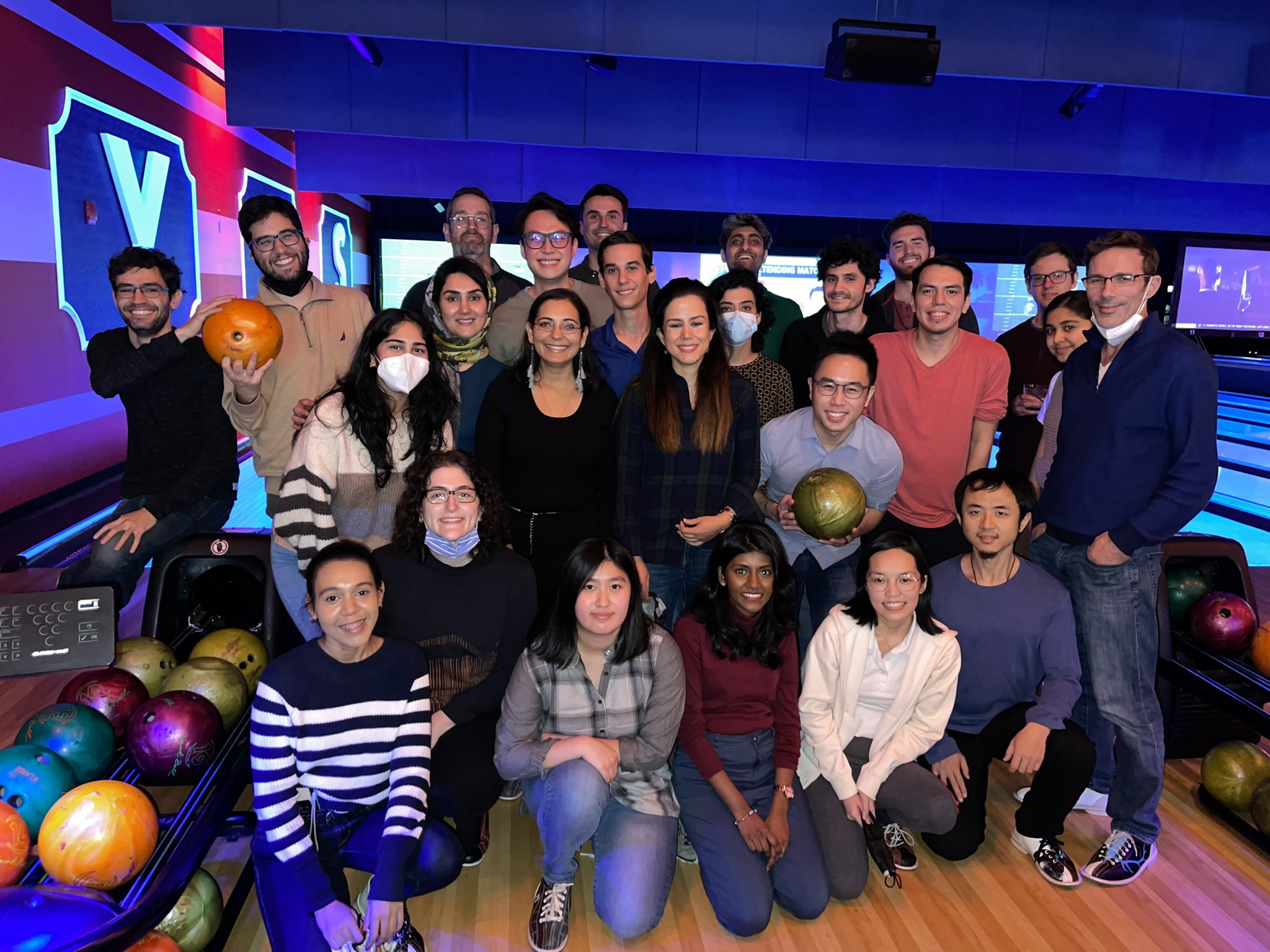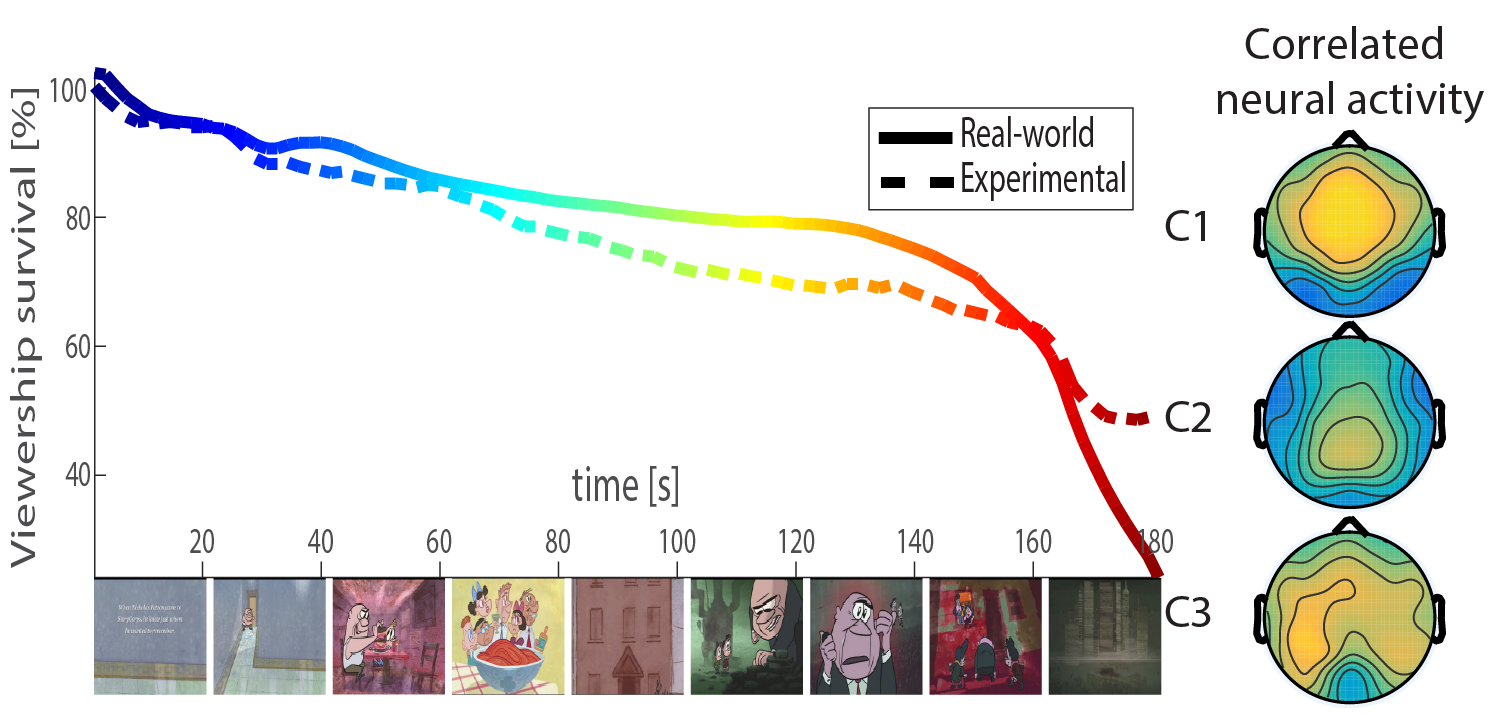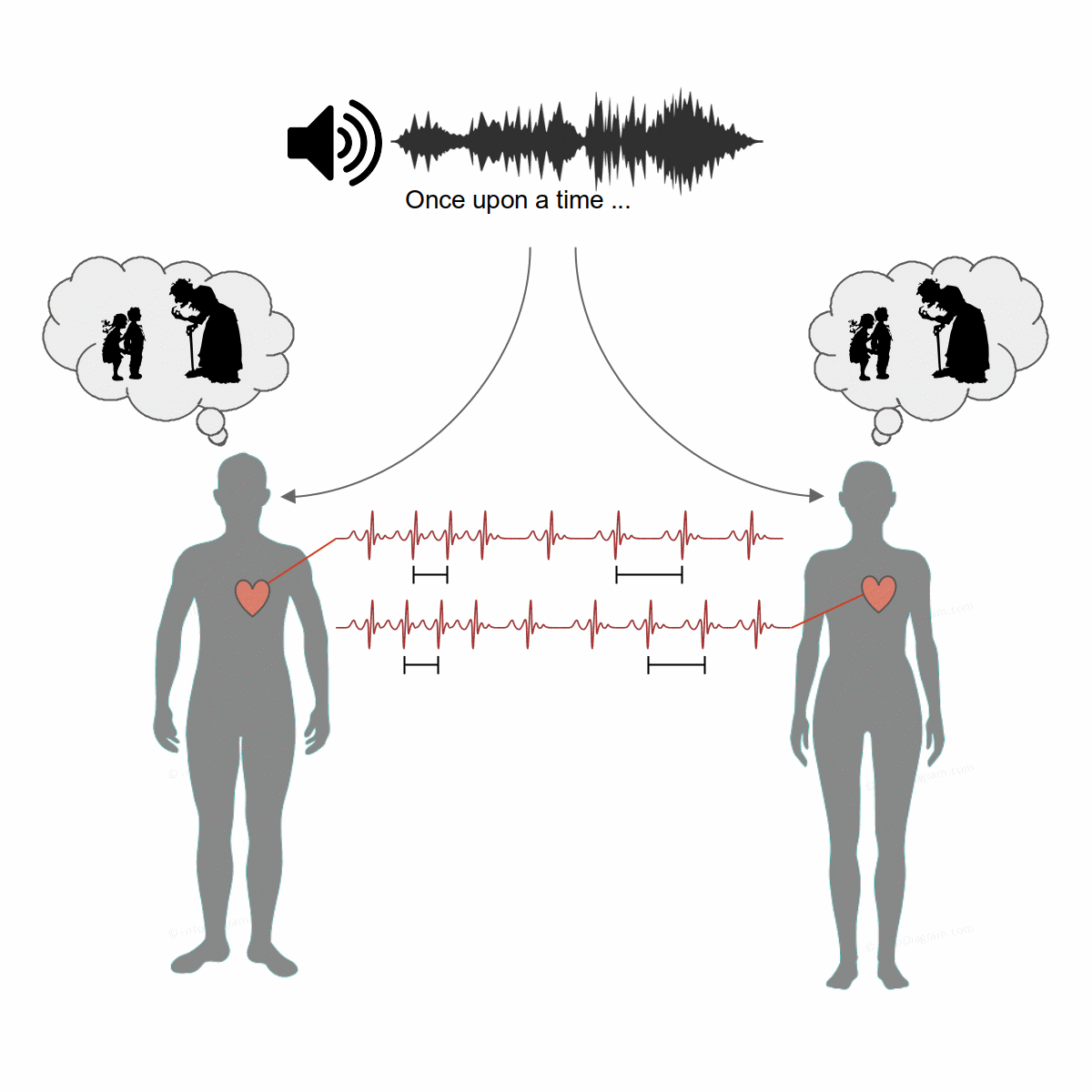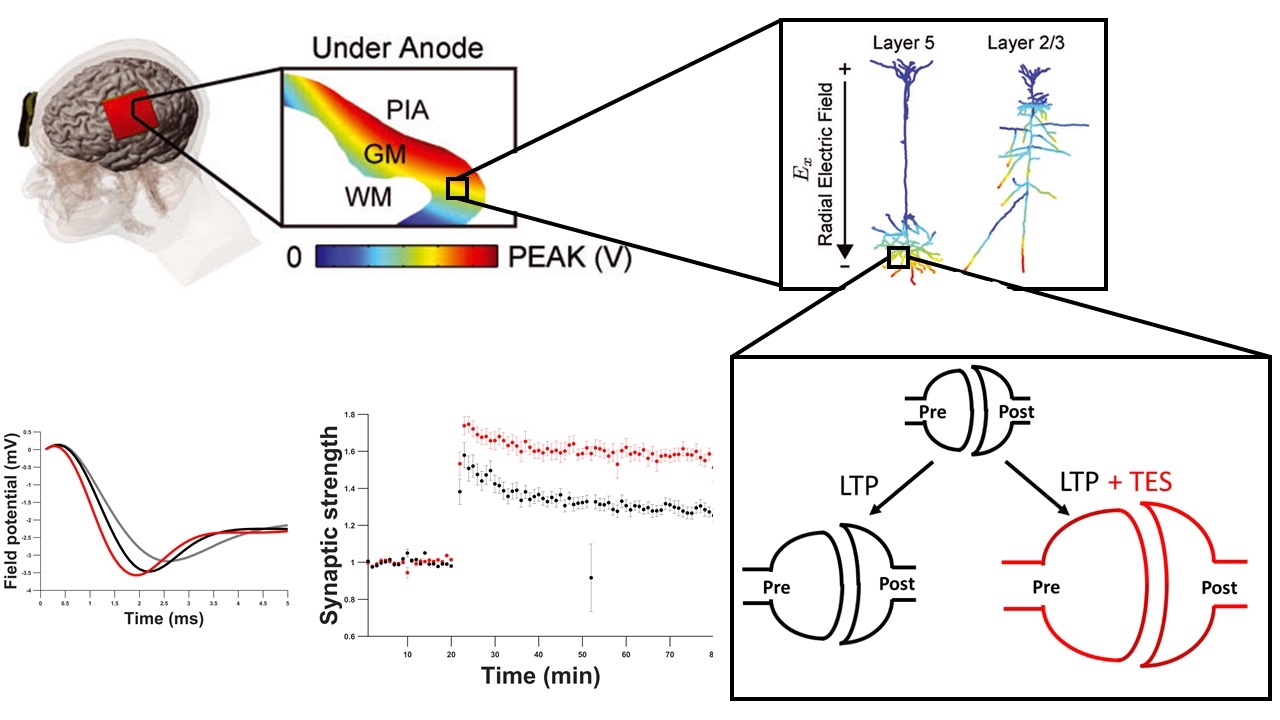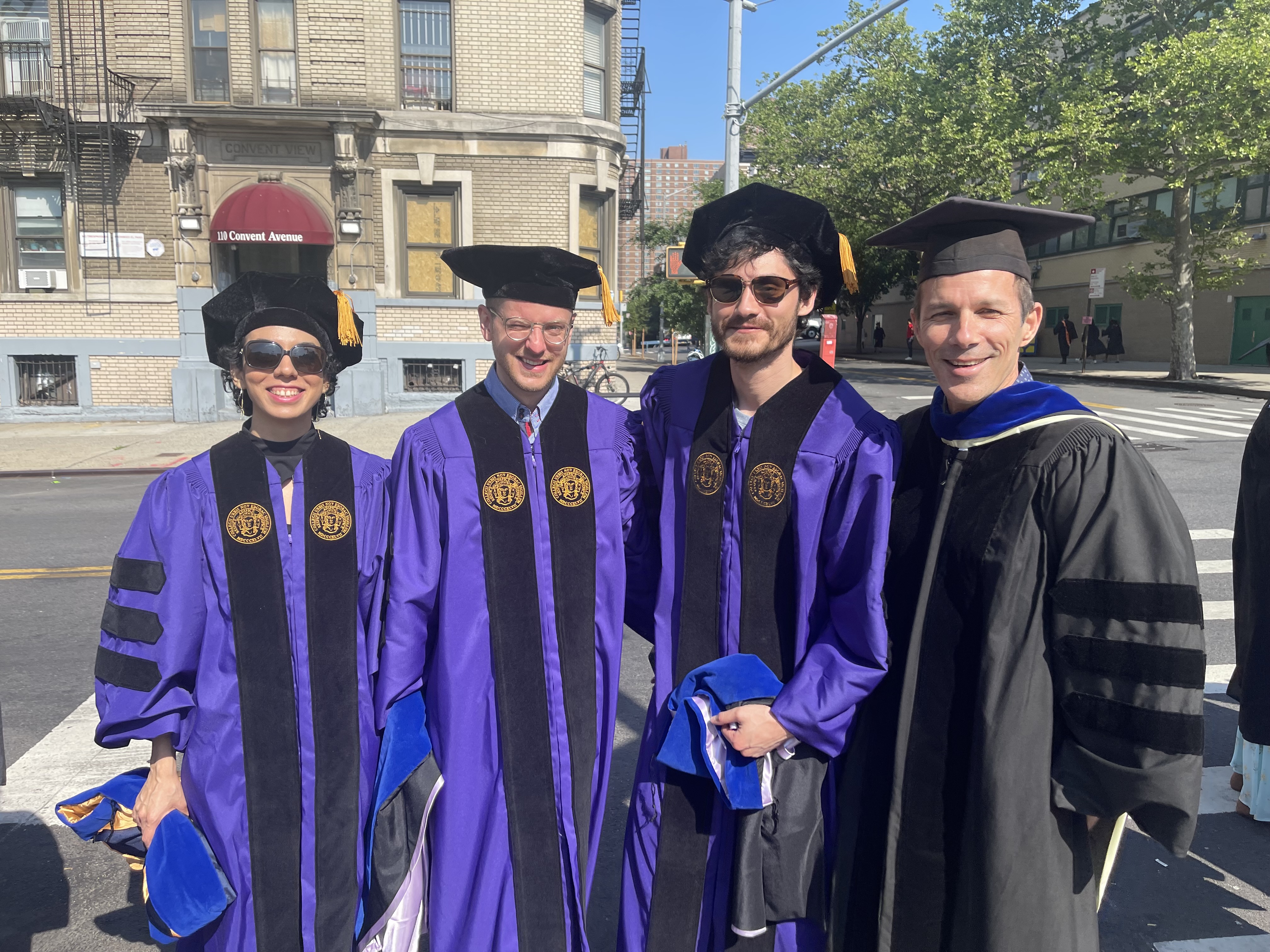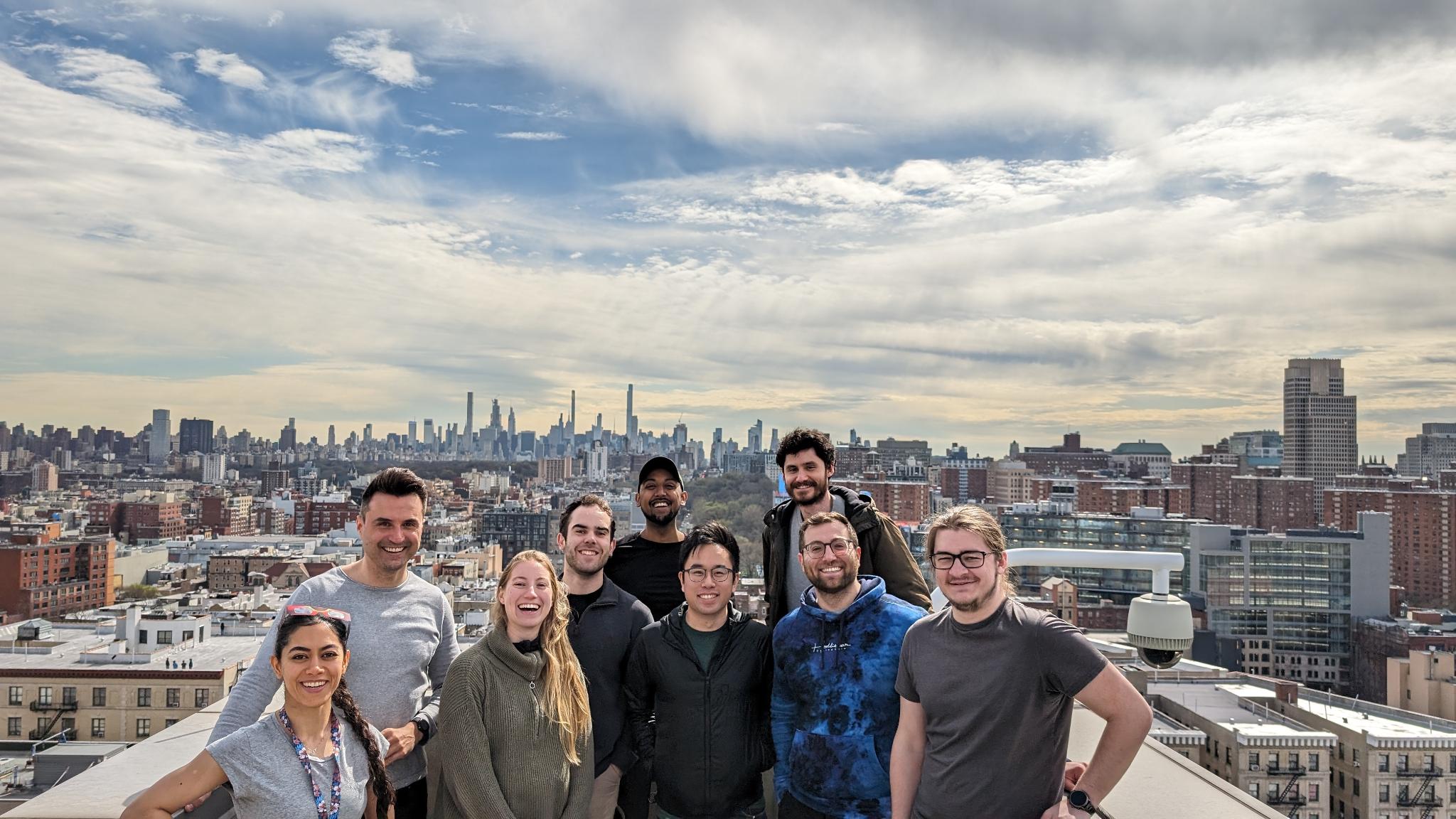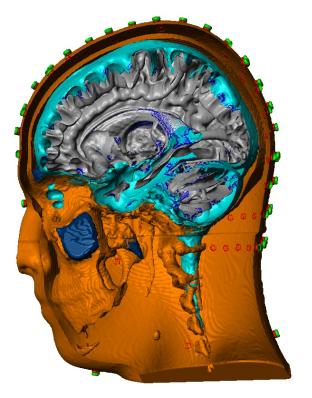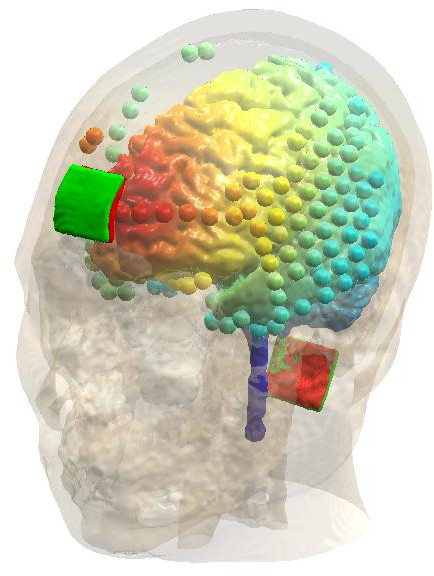The Parra Lab works at the intersection of brains and machines. Current areas of interest are the effects of movies, speech, music and video games on body and brain; the effects of transcranial electrical stimulation on learning; and machine learning methods for medical imaging.
Here is a video overview of the work in the lab.
Join the lab
CCNY Campus Access Information
Contact us
Lab location
Center for Discovery and Innovation
85 Saint Nicholas Ter, 3rd floor South
New York, NY 10031-1246
at front desk, call phone number(s) below
85 Saint Nicholas Ter, 3rd floor South
New York, NY 10031-1246
at front desk, call phone number(s) below
Mailing address
Phone Numbers
+1 (212) 650-7211 - Lucas Parra Direct Extension
+1 (212) 650-8426 - Lab Admin
+1 (212) 650-7000 ext (dial 8) 49045 - Neural Engr 3 South
+1 (212) 650-8653 - Neural Engineering Student Space
+1 (212) 650-8876 - Slice Lab
+1 (212) 650-7000 ext (dial 8) 49012 - CDI G.430 EEG Lab
+1 (212) 650-7000 ext (dial 8) 49068 - CDI G.434 EEG Lab
+1 (212) 650-8426 - Lab Admin
+1 (212) 650-7000 ext (dial 8) 49045 - Neural Engr 3 South
+1 (212) 650-8653 - Neural Engineering Student Space
+1 (212) 650-8876 - Slice Lab
+1 (212) 650-7000 ext (dial 8) 49012 - CDI G.430 EEG Lab
+1 (212) 650-7000 ext (dial 8) 49068 - CDI G.434 EEG Lab
Participate
We constantly recruit subjects to participate in studies for research. For example, some of our experiments involve watching videos or listening to stories while we record EEG signals. Please contact us for more details regarding current studies open to subjects.
Questions
2025
October 29
Our breast cancer detection work was highlighted by the CUNY Chancellor in his State of the University address, recognizing the team's groundbreaking AI model and commitment to advancing equity in health care.
August 6
A commentary on our recent paper in Radiology:AI was published online, and also mentioned in health news, and CUNY newsletter.
June 25
We published a state-of-the-art AI model to detect breast cancer in MRI (CCNY press release, Science Magazine mention, Bioengineer.org mention). This foundation model was trained on 60,000 breast MRIs and was fine tuned to detect cancer 1 year in advance (press release).
May 13
Former BME undergraduate research assistant, Beliz Kayis, who worked to help us develop an algorithm to be able to analyze and detect anomalies in breast MRIs, was awarded the Jonas E. Salk Scholarship by The City University of New York. (press release)
2024
October 10
We show that one can detect breast cancer 1 year earlier in screening MRI using AI, and thus potentially save lives (press release, and paper).
April 23
Cell report paper where we show that the brain and the body interacts in both directions.
2023
June 6
Participation at the 10th International Breast Density and Cancer Risk Assessment Workshop (IBDW) 2023, Kailua-Kona, Hawaii, US. The poster is on our recent work on segmentation, diagnosis and risk prediction of breast cancer on MRI (see poster).
2022
Dec 24
New paper published in Brain Stimulation: Robust enhancement of motor sequence learning with 4mA transcranial electric stimulation.
Dec 1
The lab was awarded an 5-year NIH R01 grant to study effects of electric brain stimulation on motor learning. Work of Forouzan Farahani and Gavin Hsu, in collaboration with John Martin.
Sep 15
We are launching an online seminar series on AI for Breast MRI.
July 21
Best poster award at the International Mind, Brain and Education Society Conference 2022, Montreal, Canada. The poster is on our recent work on online video instruction (see poster).
June 17
Radiology Society of North America features our recent work on segmenting breast tumors with big data.
June 15
NSF funds our 3 year project that studies remote video-based instruction.
June 9
Preprint available for our study of tDCS effects on motor sequence learning.
May 26
PNAS front matter: How stories and narrative move the heart—literally. This is a nice overview of latest research on heart rate and stories.
2021
Nov 12
First in-person talk since the pandemic; at the ECE Department of the University of Maryland: "Brains on video, speech, music and video games". It's an attempt to have a conversation with the audience instead of the usual 1h-long monolog.
Oct 8
The study of Madsen et al. on heart rate made it into the Wall Street Journal: "Storytelling makes hearts beat as one".
Sep 26
Short segment on study the study of Madsen et al. on heart rate in the posdcast "The Smart 7", which happens to be a fun collections of 7 science news items every week: "September 26th episode (jump to 9:15)".
Sep 24
News story in PNAS about our latest study on the heart: "When listeners pay close attention to stories, their heart rates synchronize".
Sep 15
We show that listening to stories synchronizes heart rate, in this publication from Madsen et al. in Cell Reports. Here is our
CCNY Press Release.
The story was picked up in a few news outlets:
Science Daily Press Release,
US News,
IFL Science,
Science Focus Magazine,
ZME Science,
Cosmos Magazine,
The Hill,
Neuroscience News, Good News Network,
Technology Network Neuroscience,
Actualitte (French)
April 11
New paper published in Brain Stimulation: Cutaneous Sensation of Electrical Stimulation Waveforms.
April 8
New paper published in Brain Stimulation: Effects of direct current stimulation on synaptic plasticity in a single neuron.
Feb 23
Is anyone paying attention online? What if you could track to see who is engaged? Who is struggling? TEDxNaperville has a conversation with Lucas Parra live on youtube.
Jan 28
Jens Madsen's work on eye movements measured on over 1000 people online
was
published in PNAS today. We show that synchronized
eye movements predict test scores for online educational videos.
Here are videos from the study,
and here is a press release, and media reports.
2020
Dec 9
The National Cancer Institute of the NIH awards 5 year grant to work on
Machine learning for risk-adjusted breast screening with MRI
in collaboration with Memorial Sloan Kettering Cancer Center. Work of Lukas Hirsch and Yu (Andy) Huang.
2019
Oct 30
New paper published in Brain Stimulation:
direct current stimulation boosts hebbian plasticity in vitro
May 9
ROAST paper published in Journal of Neural Engineering.
Mar 8
Feb 26
Plenary talk at the Brain Stimulation Conference in Vancouver expalining how tDCS works is well received Here are slides.
Feb 26
Our paper on different brain imaging techniques was featured on CUNY SUM.
2018
Dec 12
Our research on student engagement during online learning was highlighted by CUNY SUM.
Nov 30
New paper published in Nature Communication on review of neurophysiological effects of transcranial electrical stimulation.
Sep 26
New paper published in Brain Stimulation speaking for conventional TES for deep brain stimulation.
July 20
June 20
The paper "Finding influential nodes for integration in brain networks using optimal percolation theory" has been highlighted by The City College of New York.
June 11
Our paper "Finding influential nodes for integration in brain networks using optimal percolation theory" has been chosen by the editors of Nature Communications as a featured article in their interdisciplinary collection of recent research on complex systems.
Feb 15
The corrected version of the eLife 2017 paper on validation of TES models has been published today. The corrected message from the paper is that TES can achieve up to 0.8 V/m electric field under 2 mA stimulation transcranially. See the Correction Notice.
2017
Nov 11
Today Yu Huang (Andy) released ROAST. This open-source software makes individualized modeling of tDCS/tACS ridiculously easy. Here a video of the presentation at the NIH modeling workshop that day: starting at 3:17:00.
Oct 31
In our Nature Communications paper we report that a commonly held belief about transcranial electric stimulation is not necessarily true: Transcranial stimulation does not entrain brain-rhythms. The tACS community will now have to work a little harder before making claims about brain oscillations. Here are some reactions from the community, and some quotes from our collaborator in Reuters and Medscape.
June 21
New tutorial on EEG component extraction methods presented at CuttingEEG in Glasgow:
Slides and code.
April 27
Commentary on
new study measuring student engagement in the
classroom.
The
Smithsonian Magazine.
April 20
Short podcast describing the brain reading work in the lap: Brain teaser.
April 7
Andy presented his validation work for TES models at the 7th Annual TMII Symposium at Mount Sinai. Here is the video.
April 3
"Plugging
electrodes into your brain like 'Matrix' the movie --
that's not going to happen for a long time ... we're
focused on what we can do today." -- Lucas Parra.
Commentary
on brain reading technology at Circa.com.
Mar 16
NSF award
3
year grant for "Assessing student attentional
engagement from brain activity during STEM instruction".
Feb 12
New paper on
modulation of synaptic plasticity with direct current
stimulation:
Kronberg
et al. Brain Stimulation 2017
Feb 7
Transcranial electric stimulation measured in the living
human brain in over 1300 electrodes:
eLife
paper,
video, and
commentary.
2016
Nov 30
Nov 22
Child Mind Institude released EEG and eye gaze from 126
kids and adults during multiple tasks, rest and video.
Data
and code free for all here. We found interesting
age
and gender effects on the video data.
Oct 6
Our study on the
balance
between novelty and regularity in bird song inspires
analogies with human music:
Research
finds that birds behave like human musicians.
Sep 29
Lucas Parra explains how tDCS works at the the NIH
symposium on trancranial electric stimulation. Here the talk, and here
These are
all the talks from that day.
Jun 5
NIH-NINDS awarded a 5-year R01 grant entiteled "Effects
of direct-current stimulation on synaptic
plasticity". This project will investigate the effects
of tDCS on the strength of connections between neurons,
which may inform the treatment of neurological or
psychiatric decease.
2015
June 29
NIH-NINDS awarded a 3-year R44 grant entiteled "Targeted
Transcranial Electrotherapy to accelerate Stroke
Rehabilitation". This project will test the
effectiveness individually targeted high-definition TDCS
as adjunctive treatment to language rehabilitation in
aphasia.
April 23
Several students (at various levels including HS, UG,
MS) have been playing in the lab with
Human-Computer
Interfaces using eye-tracking. This caught the
attention of the media when it was submitted to the New
York City Science and Engineering Fair:
NYC
teen's eye-tracking computer project, Fox 5 News.
2014
July 29
Our
Nature
Communication paper showing that inter-subject
synchrony of EEG is a good predictor TV audience
response attracted quite a bit of press: Interview on
channel
NTN24 (Spanish),
LA
Times,
The
Guardian,
Vocative,
Philly.com,
Hazlitt,
Business
Insider Australia,
Sci
Tech Today,
South
China Morning Post,
Quartz,
Newsfactor,
Nature
Highlights,
The
Munich Eye,
Tech Times .
2012
Oct
The finding that
EEG signals can be
boosted by puting subjects on their head was written up here:
"Getting
The Position Right For EEG", Discover, (Oct 7,
2012). "Tilt
your head to improve brain signals", NewScientist, (Nov
30, 2011).
June
Our study on
measuring
engagement with EEG during movies generated quite a buzz:
Zombies,
Twitter, And Braaiiins!: The Neuroscience of The Walking Dead,
FastCompany, Co.Create blog (Nov 14, 2012)
"New
Research Could Help Advertisers Read Your Mind" Reuters TV,
(July 10, 2012).
"Your
brain on horror movies"
Discovery News, (July 13, 2012).
"Alfred
Hitchcock, Your Brain, and DARPA"
Neuromarketing, (June 13, 2012). and the list goes on:
Scientific
American, and more.
2011
and prior ...
Our work on brain-reading technology has generated a few articles
over the years:
Mind
Reading Machines, Discover Magazine (Oct 2011).
BreakOut!:
Your Brain's Search Engine, Forbes.com Video Network
(January 2010).
Documentary:
The Brain, History Channel (Nov 10, 2008).
"Tapping the
Computing Power of the Unconscious Brain" IEEE Spectrum
Video (August 2008).
"A Brainy
Approach to Image Sorting", IEEE Spectrum (April 2008).
"When the brain is a component of
the computer", Politiken (Danish newspaper, July 2007).
"Brain-Computer
Interfaces: Where Human and Machine Meet", IEEE Computer
Magazine (January 2007).
"Subliminal Search", MIT Technology Review (July 2006).
"Man and machine vision in perfect harmony", New Scientist,
(July 2006)
